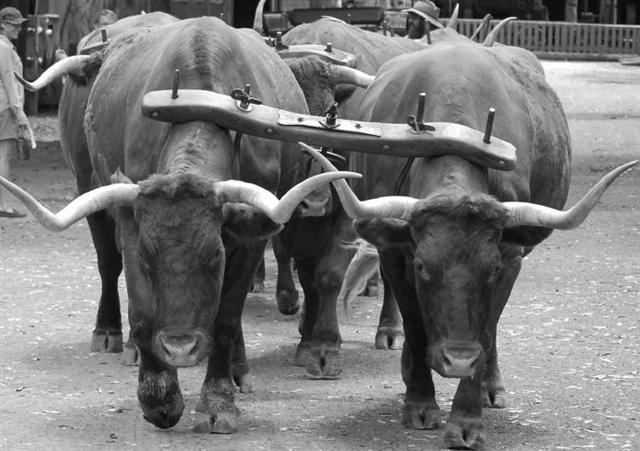The first time Metoro said koia ra (while reading the C text) was at Ca6-26, but then he continued to use this term several times (and at the same type of glyph) while reading the 'Moon calendar':
Ca7-26 is also in position 26 in the line (like Ca6-26). 72 * 6 = 432 = 2 * 216. The reversed moe bird in Ca7-28 indicates a radical change, possibly referring to October 1 as the first day of the last (4th) quarter in the Gregorian calendar. However, I guess the extra-ordinary marama in Ca7-27 may have alluded to the 'Heart' of King Charles I (Cor Caroli, α Canum Venatici):
... In the inscriptions of Dendera, published by Dümichen, the goddess Hathor is called 'lady of every joy'. For once, Dümichen adds: Literally ... 'the lady of every heart circuit'. This is not to say that the Egyptians had discovered the circulation of the blood. But the determinative sign for 'heart' often figures as the plumb bob at the end of a plumb line coming from a well-known astronomical or surveying device, the merkhet. Evidently, 'heart' is something very specific, as it were the 'center of gravity' ... See Aeg.Wb. 2, pp. 55f. for sign of the heart (ib) as expressing generally 'the middle, the center' ... A radical change is evident also where line Cb6 is changing to line Cb7. Number 193 could allude to July 12, when Castor rose heliacally in the day after the culmination of Antares. And 80 + 193 = 273 (September 30) = April 1 (91) + 182. And September 6 is Gregorian day 249 (80 days earlier than the heliacal rising of Antares) = 23h (350.0) - 181 + 80 = 329 (November 25) - 80.
In Ca8-12 the explanation for koia ra possibly is nakshatra Alrisha as a mark for where Pisces was ending. April 19 = Al Muakhar 1. Thus there was a radical change in the nakshatra sky. But then we could return to Ca6-26 and say there was a radical change in the nakshatra sky also in March 5 = Saad Balaa 8 (293). 365 + 293 = 2 * 329 (November 25, when Antares rose heliacally). By adding 365 and then dividing by 2 the manzil day number 293 changes to another order between the digits (329 in the Gregorian calendar). And then - and probably the major cause - we could also reconnect to the heliacal manzil day 293 (Ca13-7, 350) and the preceding koia ra at Ca13-5:
Finally, the major change visualized in Ca8-25 could refer to the nakshatra date Alrescha 1 which was announced in the previous night by Bharani as nakshatra star. This was where the manzil Al Muakhar (ruled by Pollux) was ending - in manzil day 350:
May 1 (121) + 184 = 305 (November 1). And May 1 = Al Muakhar 13 (350):
Here the words of Metoro (hua ra = offspring of Sun, koia, and vaha mea = red dawn) could indicate the beginning of spring (in the calendar systems designed for an observer north of the equator). Apparently it was the type of glyph (or maybe the position as number 2 in the 'period'), which evoked Metoro's koia ra - although there were 4 more such glyphs (or positions) where he did not say koia ra.
The crucial word is evidently koia (together), while ra (Sun) seems to be more of an addition to make things more clear. Tagata should mean 'completed', although the glyph type definitely does not look like the tagata type of glyph. For Metoro the word tagata was possible to use not only where the glyph illustrated a completely drawn person but also wherever else something was completed. Pau koia could mean 'no longer together' and koia kua oho could mean 'the state of being together is leaving'. There is a distinct possibility that the technical term koia ra meant the junction ('yoga') between one major Sun period and the next. ... Punarvasu is one of the twenty-seven (or twenty-eight) zodiacal constellations in the Indian system of Nakshatras. In each of the Nakshatras there is a 'yoga', a key star that marks a station taken by the moon in its monthly (twenty-seven- or twenty-eight-day course) through the stars ...
... Exactly whom Boötes is supposed to represent in Greek mythology is not clear. According to one version, he was a ploughman who drove the oxen in the constellation Ursa Major using his two dogs Chara and Asterion (from the constellation Canes Venatici). The oxen were tied to the polar axis and so the action of Boötes kept the heavens in constant rotation ... | |||||||||||||||||||||||||||||||||||||||||||||||||||||||||||||||||||||||||||||||||||||||||||||||||||||||||||||||||||||||||||||||||||||||||||||||||||||||||||||||||||||||||||||||||||||||||||||||||||||||||||||||||||||||||||||||||||||||||||||||||||||||||||||

























